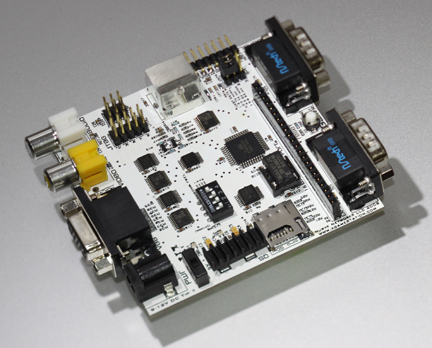Value Packs
By Bryan Bergeron
It’s hard to beat the value provided by the various educational kits sold by Parallax ([url=http://www.parallax.com]http://www.parallax.com[/url]). Over the past several years, I’ve purchased (with personal funds) virtually every kit and course the company offers. Want to explore sensors and signals? They have a great text and component package. How about robotics? The Stamp-based Boe-Bot and SumoBot kits are simple enough for a child to build and challenging enough for a robotics or microprocessor enthusiast of any age. Even the $5,000 Parallax QuadRover — the exception to my Parallax acquisitions — provides an economical platform for a college course on robotics or for a robotics club. If you’ve ever built a moderate-sized, wheeled robot from scratch, then you recognize that $5,000 is a bargain.
Another of my favorites is Nurve Networks ([url=http://www.gamestation.com]http://www.gamestation.com[/url]) which offers a variety of no-frills, value-packed game development hardware and software kits. The Hydra game development kit — based on the Parallax Propeller chip — is by far the most economical path to working with and understanding the operation of the eight-core chip. In the June ‘07 issue of Nuts & Volts, I described how to build an exergame with the Hydra kit using a mems sensor and a few dozen lines of SPIN code. By no frills, I mean that you get everything you need to start developing games, but no fancy enclosure, knobs, or other human interface niceties.

Nurve Networks’ most recent addition to their game development kits — the XGameStation — maintains the tradition of providing a lot of hardware, software, and documentation for a little. The $140 kit is available in two flavors: an eight-bit AVR model (see photo) which I own, and a 16-bit PIC model. As with the Hydra kit, the impressive XGameStation provides one of the most economical means of working with the underlying microcontroller chip.
The single board XGameStation provides numerous I/O ports for audio, video, data, Flash micro SD card, keyboard, and more. In addition, my AVR-based system shipped with a gamepad controller, PC serial port converter, Atmel AVR ISP MKII Programmer, wall transformer power supply, 1 GB SD card, cables, DVD with software, and 325 page spiral bound manual. Could I have assembled the same components for less? Perhaps, if I found a single supplier to minimize postage and handling fees. But even then, I would have missed out on the manual and software, and would have likely had to settle for blinking LEDs instead of a video image for development feedback.
Is an XGameStation, Hydra, Boe-Bot, or other value pack for you? It depends. The downside of these and similar value packs or bundles is that you get a great deal — as long as you need or want everything that comes with a kit. If you like video games, want to explore the Hydra, PIC, or AVR microcontrollers, and don’t own a programmer or peripherals, then either the Hydra or XGameStation is a no-brainer. There’s also the issue of minimal disruption. I loved my XGameStation from the start, for example, simply because everything arrived in one box and I didn’t have to tear apart other projects for parts.
Furthermore, I didn’t have to hunt down specifics on the AVR chip or source code examples — examples and documentation were either in the manual or on the DVD. The advantage of working with a fully specified hardware configuration — that is, a kit — is that you can leverage the knowledge and skills of hundreds of other experimenters who have bought into the platform. Need to modify the optional gripper for your Boe-Bot? Check out the forum on the Parallax website. Someone has probably done it before and you can learn from his or her efforts. It’s more difficult to post a question about a custom microprocessor platform and expect support without offering an exhaustive, accurate description of your setup.
What are other value packs worth noting? Check out the vendors advertising in this magazine. I’m also impressed with the educational electronics kits offered by Jameco ([url=http://www.jameco.com]http://www.jameco.com[/url]) and robot kits by Lynxmotion ([url=http://www.lynxmotion.com]http://www.lynxmotion.com[/url]).
It’s important to note that not all kits are value packs. While the kits that consist of a poly bag of ancient parts and a placement diagram may be economical, they are often the educational equivalent of empty calories. Look for kits with quality printed and electronic documentation — in English — and a significant user base. Check out the support and forum sites before you buy. It’s comforting to know that help is available, if and when you need it. NV
Comments

